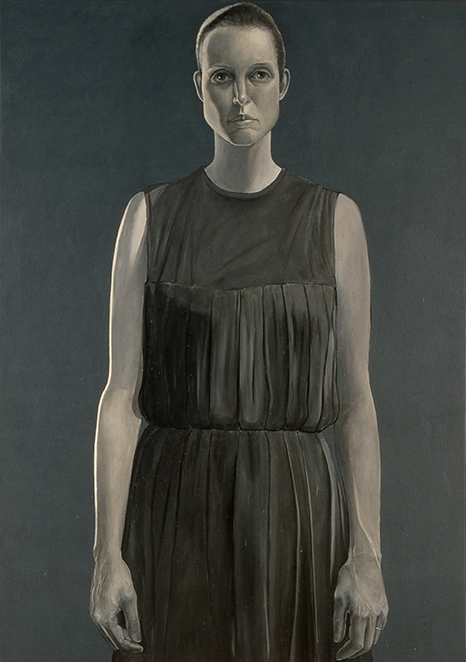Lisa Bigelow born 1930
Alfred Leslie (born 1927)
Synthetic polymer on canvas, 1964–66

Indiana University Art Museum, Bloomington, 80.107. Purchased with the aid of funds from the National Endowment for the Arts© Alfred Leslie Photograph by Michael Cavanagh and Kevin Montague
After creating abstract paintings for a decade, around 1962 Alfred Leslie began to experiment with a series of large figure paintings, made from life with dramatic lighting. They were done in grisaille—or shades of gray, black, and white—with some subtle color. As Leslie recounted later, he wanted to confront the viewer and eliminate color, gesture, and composition to “create a new standard of what I thought art should be, with figuration being an equal partner, without negating the value or power of abstraction.” By October 1966 Leslie had created dozens of canvases, either frontal female nudes depicted from head to fingertips, or portraits in a similar format. A devastating fire in his studio in New York City destroyed nearly all of his work. This portrait of his wife, Lisa Bigelow, survived. It was painted in natural light, creating a glowing and more subtly dramatic effect.

